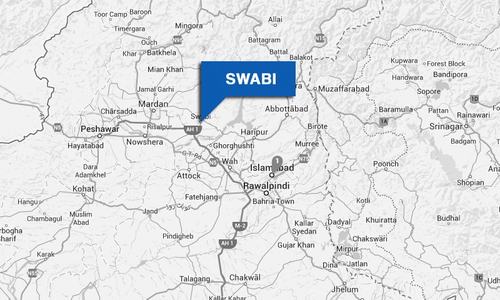ISLAMABAD: With Tarbela Dam having lost over 35 per cent of its storage capacity, the government has decided against de-sedimentation of the reservoir, fearing an irreparable loss to downstream river, irrigation and engineering systems.
The decision has been taken on the basis of latest hydrographic survey and sedimentation study, according to Water and Power Minister Khwaja Mohammad Asif.
In a written report submitted to the Senate, the minister confirmed that the dam had lost over 35pc of water storage capacity since its inception due to silting.
“Hydrographic survey 2015 reveals that the gross and live storage capacities of Tarbela reservoir since its impounding have reduced from 11.616 million acre feet (MAF) to 7.271 MAF (37 per cent) and 9.692 MAF to 6.328 MAF (35pc), respectively,” he said.
Khwaja Asif said the water and power authorities had in the past considered de-sedimentation of the dam through excavation of silt to reclaim lost storage capacity, but it was not worth the effort.
The sedimentation study was conducted in 2013 to examine the techno-economic viability of evacuation of sediments deposited in Tarbela reservoir since its construction. “The study concluded that sediment flushing is technically difficult and uneconomical with a negative rate of return,” the minister wrote.
The study also held that flushing would impact on the downstream river system, increase sediment load entering canals, changing bed levels in the river channel and necessitating additional sluicing to clear canal head regulator pockets.
At Chashma, the study warned, there might be head loss into the power station and increased sediment load would pass through turbines and potentially damage the structure. This could also lead to loss of electricity at Tarbela and Ghazi Barotha project and loss of water storage for irrigation at Chasma barrage.
The minister said the inflow of soil or sediments was a natural phenomenon and could not be prevented. However, the construction of upstream storage and watershed management can reduce the sediment inflows. In principle, sediment inflows can be reduced either by catchment management or by construction of check dams.
In this specific case, the minister explained that in 94pc of total areas in the upper catchment of Indus, the run-off was dominated by snow melt from Himalayan and Karakoram ranges and hence it was considered impractical to implement catchment management measures over such an inaccessible and extensive area.
In the lower catchment, which forms only 6pc of the total area, various measures have already been undertaken. To be effective over a considerable period, check dams will require a storage volume approaching Tarbela itself to contain the average sediment inflow of 150,000,000 cubic meters.
The only dam impounding such a volume that has been identified is Diamer-Basha Dam (DBD). The effect of Basha on sedimentation of Tarbela has been investigated and it has been estimated that life of Tarbela Dam will increase by 35 years on the construction of DBD.
However, it was not yet certain when the construction of DBD could be taken in hand.
The minister said DBD would require land acquisition of about 37,419 acres, including 35,991 acres in Gilgit-Baltistan and 1,428 acres in Khyber Pakhtunkhwa. The land acquisition process in KP is moving at a snail’s pace, while GB is at an advanced stage of completing the land acquisition process.
Khwaja Asif said the KP government was required to acquire 989 acres of government and 439 acres of private land for the multi-billion dollar project, but it had so far acquired only 162 acres (37pc) from private citizens, while the acquisition of the government land was outstanding.
On the other hand, 10,093 acres (more than 56pc) of the 17,918 acres private land and 17,214 acres (more than 95pc) of the 18,073 acres government land have so far been acquired for the DBD.
The total project cost, according to its papers approved in 2009 by the Executive Committee of the National Economic Council, was Rs895 billion, including land acquisition and resettlement through the Public Sector Development Programme.
The minister said major construction work – main dam construction – had not been yet started because of absence of commitment of funds by international lending agencies for which the government was consistently pursuing them. Whenever the financial commitments are available, he said, the revised cost estimates would be approved and the construction would take nine years to complete.
Published in Dawn, April 18th, 2016


































